#Ramon Berenguer III
Text


Kind of an experimental background, but gay rights Ramon Berenguer III!
#digital art#history art#11th century#12th century#ramon berenguer iii#medieval catalonia#medieval barcelona#count of barcelona#gay#pride art#pride month#trans#catalan tag#spain tag
11 notes
·
View notes
Text

Els comtes reis catalans del llinatge dels Beŀlònides.
#Beŀlònides#comtes reis#reis catalans#Catalunya#Principat de Catalunya#Regne de València#Regne de Mallorques#Guifre el Pelós#Borrell II#Ramon Berenguer II#Ramon Berenguer III#Ramon Berenguer IV#Peronella#Alfons el Cast#Pere el Catòlic#Jaume el Conqueridor#Pere el Gran#Alfons el Liberal#Jaume II#Pere el Cerimoniós#Joan el Caçador#Martí l'Humà#comtes de Barcelona#comte de Barcelona#Beŀlònida
2 notes
·
View notes
Text

Berenguela de Barcelona
She was a very beautiful and extremely graceful young girl who loved chastity and truth and all God-fearing people.
Berenguela was the daughter of Ramon Berenguer III, Count of Barcelona and his third wife Dolça I de Gévaudaun, Countess of Provence. Although her date of birth is unknown, the sources place it between 1108 and 1116. It is known that Berenguela had a good relationship with her older sister, María de Osona, who was the daughter of the first marriage of her father with María Rodríguez, the daughter of El Cid Campeador.
In 1128 Berenguela married Alfonso VII, King of León, Castile and Galicia. She becoming the first queen of the newly reigning dynasty of the House of Ivrea. In 1135, Alfonso VII was crowned “Emperor of Spain” (Imperator totius Hispaniae) in the Cathedral of León. The imperial couple had seven children, of whom Sancho III was King of Castile and Fernando II King of León. The daughters, Constanza and Sancha, became Queens consorts of France and Navarre.
Historians who have dedicated to studying her life consider that Berenguela de Barcelona was one of the characters who deserves a privileged position in the history of Spain. She actively participated in political life and was patroness of the arts. She accompanied her husband in the battles, stopped the uprising in Asturias and heroically resisted the besieged of Toledo by the Muslims. She also introduced a taste for Provencal troubadours to the kingdom, supported writers who narrated the exploits of El Cid and encouraged pilgrimages to Santiago de Compostela, where she was buried in 1149.

Berenguela nació en el prestigioso y rico condado de Barcelona como hija del conde Ramón Berenguer III y de su segunda esposa Dulce de Provenza. La joven barcelonesa destacó por su inteligencia y gran belleza, llegando su fama hasta la corte del rey Alfonso VII de Léon, Castilla y Galicia, hijo de la legendaria reina Urraca. Al parecer fue un noble, Armengol de Urgel, quien le facilitó los trámites para entrar en contacto con los condes de Barcelona. El rey de León tenía poco más de veinte años y no estaba casado, ni siquiera había ninguna candidatura seria para un matrimonio, que tarde o temprano tendría que celebrarse.
Una vez prometida al rey Alfonso VII, Berenguela de Barcelona emprendió un largo viaje. Desde Barcelona hasta la corte de su futuro marido, debía cruzar los dominios del rey aragonés Alfonso el Batallador, quien estaba en disputa con Castilla por cuestiones territoriales y fronterizas. Para evitarlo, Berenguela y su comitiva tuvieron que hacer parte del viaje por el sur de Francia, llegar hasta el Golfo de Vizcaya y fletar unas barcazas que, bordeando la costa cantábrica, les permitieran desembarcar en un puerto controlado por los leoneses.
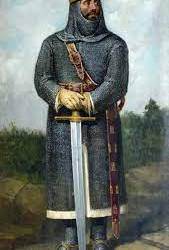
A finales de 1128 o enero de 1129, los prometidos contraían matrimonio en la villa de Saldaña. Con motivo de las celebraciones de los esponsales, que duraron varios días, se dice que tuvo lugar la primera corrida de toros celebrada en la Península. La pareja imperial tuvo siete hijos, destacándose Sancho III de Castilla y Fernando II de León. La joven reina forjó una gran amistad con su cuñada la infanta Sancha Raimúndez, llegando a ser ambas las principales consejeras de Alfonso VII. Berenguela participó en la política de forma activa, fue la principal responsable de apagar la rebelión del conde de Asturias Gonzalo Peláez y acompañó a su esposo a la guerra en muchas ocasiones, participando así de sus victorias.
En 1135 tuvo lugar la coronación de Alfonso VII como Imperator totius Hispaniae en la catedral de León, gran parte de los nobles presentes en el acto habían llegado gracias a los contactos de la reina y su familia; así su hermano Ramón Berenguer IV, Armengol de Urgel, el conde Alfonso Jordán de Tolosa, el de Montpellier, el duque de Gascuña, el de Foix y otros grandes señores del Sur de Francia. A ella, entonces, cupo el gran honor de ser la Emperatriz consorte de Hispania.

Nos dice la crónica de Alfonso VII que en 1139 la reina Berenguela fue la responsable de una heroica resistencia en Toledo. Habiendo partido su marido al sitio del castillo de Aurelia, encargó a su esposa la defensa de la ciudad. Pero la campaña se alargó demasiado y Toledo fue sitiada por las tropas musulmanas. Berenguela reunió un pequeño ejército, pero, consciente de su inferioridad, decidió intentar una jugada diplomática para tratar de evitar la lucha. Indignada por la destrucción de la torre de San Servando, cercana a la ciudad, Berenguela envió un mensajero con una carta al campo enemigo que decía lo siguiente:
"¿No conocéis que es mengua de caballeros y capitanes esforzados acometer a una mujer indefensa cuando tan cerca os espera el emperador? Si quereis pelear id a Aurelia y allí podréis acreditar que sois valientes, como aquí dejar demostrado que sois hombres de honor si os retiráis".
La reina Berenguela apareció además sentada sobre un trono real en una de las torres, rodeada de sus doncellas, que cantaban con tímpanos, cítaras, címbalos y salterios. Los musulmanes quedaron impresionados por la nobleza de la reina y levantaron inmediatamente el cerco, marchando a luchar contra Alfonso. Cuando el alcaide de Toledo, Nuño Alfonso, entró victorioso en la ciudad portando las cabezas de los emires de Sevilla y Córdoba, las mandó colgar de las torres del alcázar, pero la reina se apiadó, ordenando que las embalsamaran y enviaran a sus viudas en cofres de oro. Una torre en Toledo (la Torre de la Reina) recuerda la gesta de la reina Berenguela.
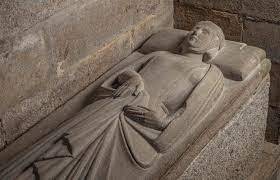
Berenguela es recordada como una prudente reina que sacrificó sus sentimientos dando prioridad a los intereses de la corona. Cuando de las infidelidades de su esposo con la noble asturiana Gontrodo Pérez nació una hija, doña Urraca, la reina perdonó a su esposo y quiso ganárselo mediante el cariño. Aún más, cuando Urraca casó con el rey de Navarra García el Restaurador, la reina Berenguela se encargó de preparar los esponsales con gran pompa y asistió, dando gran realce a la ceremonia. Mujer culta, Berenguela fue una gran mecenas y amante de las artes, a ella se debe el impulso de la poesía provenzal en el reino, apoyó a escritores que narraban las hazañas del Cid y fomentó el peregrinaje a Santiago de Compostela, donde fue enterrada. Su muerte fue muy lamentada, tanto que, según los historiadores de la época, el año 1149 fue usado en los documentos como punto de partida para fechar los acontecimientos, bajo la fórmula "año en que falleció la señora emperatriz".
#Berenguela de Barcelona#Berenguela Berenguer#Berengaria of Barcelona#Spanish history#women in history#Alfonso VII
25 notes
·
View notes
Text
why not name your kid as a Catalan count, we have:
Berenguer Ramon I (his wife did most of the work)
Ramon Berenguer I (made Barcelona more important) (mixed reviews on this one)
Ramon Berenguer II (had great hair apparently) and his brother Berenguer Ramon II (killed his brother)
Ramon Berenguer III son of Ramon Berenguer II
#the targaryens? idk them#catalan nobility did it first with REPEATING THE SAME FUCKING NAMES#maybe the history was the queue we posted along the way
9 notes
·
View notes
Text
Events 2.3 (before 1930)
1112 – Ramon Berenguer III, Count of Barcelona, and Douce I, Countess of Provence, marry, uniting the fortunes of those two states.
1451 – Sultan Mehmed II inherits the throne of the Ottoman Empire.
1488 – Bartolomeu Dias of Portugal lands in Mossel Bay after rounding the Cape of Good Hope, becoming the first known European to travel so far south.
1509 – The Portuguese navy defeats a joint fleet of the Ottoman Empire, the Republic of Venice, the Sultan of Gujarat, the Mamlûk Burji Sultanate of Egypt, the Zamorin of Calicut, and the Republic of Ragusa at the Battle of Diu in Diu, India.
1583 – Battle of São Vicente takes place off Portuguese Brazil where three English warships led by navigator Edward Fenton fight off three Spanish galleons sinking one in the process.
1639 – The House of Assembly of Barbados meets for the first time.
1661 – Maratha forces under Chattrapati Shivaji Maharaj defeat the Mughals in the Battle of Umberkhind.
1690 – The colony of Massachusetts issues the first paper money in the Americas.
1706 – During the Battle of Fraustadt Swedish forces defeat a superior Saxon-Polish-Russian force by deploying a double envelopment.
1716 – The 1716 Algiers earthquake sequence began with an Mw 7.0 mainshock that caused severe damage and killed 20,000 in Algeria.
1781 – American Revolutionary War: British forces seize the Dutch-owned Caribbean island Sint Eustatius.
1783 – Spain–United States relations are first established.
1787 – Militia led by General Benjamin Lincoln crush the remnants of Shays' Rebellion in Petersham, Massachusetts.
1807 – A British military force, under Brigadier-General Sir Samuel Auchmuty captures the Spanish Empire city of Montevideo, now the capital of Uruguay.
1809 – The Territory of Illinois is created by the 10th United States Congress.
1813 – José de San Martín defeats a Spanish royalist army at the Battle of San Lorenzo, part of the Argentine War of Independence.
1830 – The London Protocol of 1830 establishes the full independence and sovereignty of Greece from the Ottoman Empire as the final result of the Greek War of Independence.
1870 – The Fifteenth Amendment to the United States Constitution is ratified, guaranteeing voting rights to male citizens regardless of race.
1913 – The Sixteenth Amendment to the United States Constitution is ratified, authorizing the Federal government to impose and collect an income tax.
1916 – The Centre Block of the Parliament buildings in Ottawa, Ontario, Canada burns down with the loss of seven lives.
1917 – World War I: The American entry into World War I begins when diplomatic relations with Germany are severed due to its unrestricted submarine warfare.
1918 – The Twin Peaks Tunnel in San Francisco, California begins service as the longest streetcar tunnel in the world at 11,920 feet (3,630 meters) long.
1927 – A revolt against the military dictatorship of Portugal breaks out at Oporto.
0 notes
Text





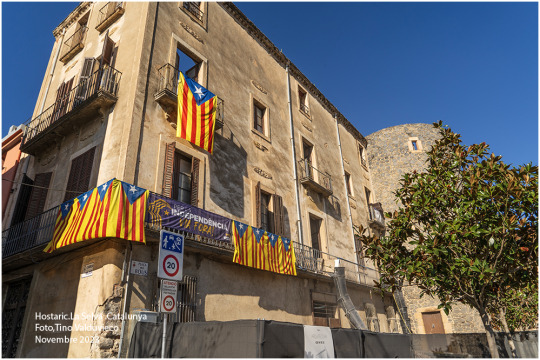




Hostalric.La primera referèrencia documantal clara d'Hostalric és del 1106 , i en ella Guereau Ponç ,vescomte de Cabrera,va jurar fidelitat a Ramon Berenguer III de Barcelona.Avui una passejada de tardor plena de colors amb molta història.
Hostaric.La Selva.Novembre 2023
©Tino Valduvieco
0 notes
Text


Queen consorts of England and Britain | [21/50] | Eleanor of Provence
Eleanor was Queen consort of England from 1236 until 1272 as the wife of Henry III. She was born in 1223 as the daughter of Ramon Berenguer IV, Count of Provence and his wife Beatrice of Savoy. Eleanor was well educated as a child and developed a strong love of reading; she was also renowned for her beauty. In 1235, she was betrothed to King Henry III of England and the two were married a few months later on 14 January 1236 when Eleanor was about 12 and Henry was 28. Eleanor was crowned at Westminster Abbey six days later. Eleanor was a dutiful and faithful wife to Henry, however she became deeply unpopular in London due to the fact that, when she came to England, she brought many nobleman from her homeland—that would become known as ”the Savoyards”. These nobleman supplanted many of the English nobility at court and were able to gain considerable influence over the King. Due to this, every subsequent foreign royal bride was forbidden from bringing any companions except servants when coming to England. In 1253, Eleanor was left as regent when Henry went on campaign in Gascony. On 13 July 1263, Eleanor was sailing down the Thames when her barge was attacked by Londoners. They pelted her with stones, mud, and rotten eggs and vegetables. The hatred between Eleanor and the Londoners was mutual and after the attack, Eleanor retaliated by levying heavy fines on citizens. On 16 November 1272, Eleanor’s husband died and was succeeded by Eleanor’s oldest son, Edward. Eleanor stayed in England as Queen dowager and took an active role in raising her grandchildren. In 1275, one of Eleanor’s grandchildren, Henry, died at the age of 6. She founded the priory at Guildford in his memory and had his heart buried there. In January 1275, she expelled the Jews from all of her lands. She finally retired to Amesbury Priory in 1286 where two of her granddaughters were already nuns. She died there on 24 or 25 June 1291 at the age of 68.
6 notes
·
View notes
Text
Eleanor of Provence (1223-1291)

Eleanor became Queen consort of England as the wife of King Henry III from 1236 until his death in 1272. She was the mother of Edward I.
Eleanor was born in Aix-en-Provence in southern France, she was the second daughter of Ramon Berenguer IV, Count of Provence (1198–1245) & Beatrice of Savoy (1198–1267). She was well educated as a child, & developed a strong love of reading.
Amazing Fact! Her three sisters also married kings.
Margaret of Provence (1221 – 1295) became Queen of France, by marriage to King Louis IX.
Sanchia of Provence ((c. 1225 – 1261), became Queen of Germany when her husband Richard of Cornwall became king.
Beatrice of Provence (c. 1229 – 1267), became Queen of Sicily as the wife of Charles I of Anjou, King of Sicily.
Like her mother, grandmother, & sisters, Eleanor was renowned for her beauty. She was a dark-haired brunette with fine eyes. Piers Langtoft speaks of her as "The erle's daughter, the fairest may of life". Eleanor married King Henry III of England on 14 January 1236. The first time she set eyes on her husband to be, was at the wedding ceremony, held at Canterbury Cathedral. She is reported as dressed in a shimmering golden dress that fitted tightly at the waist & flared out to wide pleats at her feet. Her sleeves were long & lined with ermine. The newlyweds rode into London the same day & were greeted by a procession of citizens. Eleanor was crowned queen consort of England in a ceremony at Westminster Abbey.

Eleanor was a loyal & faithful consort to Henry, but she brought a large number of uncles & cousins, "the Savoyards", & her influence with the King & her unpopularity with the English barons created friction during Henry's reign. Her uncle William of Savoy became a close advisor of her husband. Eleanor was named regent of England when her husband left for Gascony in 1253. Eleanor was devoted to her husband's cause.
She was sailing down the Thames in July 1263 when her barge was attacked by citizens of London. In revenge for their dislike Eleanor had demanded from the city all the back payments due on the monetary tribute known as queen-gold (where she received a tenth of all fines which came to the Crown). In fear for her life as she was pelted with stones, loose pieces of paving, dried mud, rotten eggs & vegetables, Eleanor was rescued by Thomas Fitzthomas, the Mayor of London, & took refuge at the bishop of London's home.
When king Henry III died in 1272, her son Edward, who was 33 years old, became king of England. She stayed in England as the queen dowager, & raised several of her grandchildren, Edward's son Henry & daughter Eleanor, & Beatrice's son John.
She later moved to a convent; but she remained in contact with her son, King Edward, & her sister, Queen Margaret of France.
Eleanor died on 24/25 June 1291 in Amesbury. She was buried in Amesbury Abbey. The exact site of her grave at the abbey is sadly unknown making her the only English queen without a marked grave. Her heart was taken to London & buried at the Franciscan priory of Greyfriars.
Eleanor was renowned for her learning, cleverness, & skill at writing poetry, as well as her beauty. She was known as a leader of fashion, importing clothes from France. She often wore parti-coloured cottes (a type of tunic), gold or silver girdles into which a dagger was casually thrust, she liked to wear red silk damask, & decorations of gilt quatrefoil, & to cover her dark hair she wore jaunty pillbox caps. Eleanor introduced a new type of wimple to England, which was high, "into which the head receded until the face seemed like a flower in an enveloping spathe". She developed a love for the songs of the troubadors as a child. She bought many romantic & historical books, of stories from ancient times to contemporary romances written in the period (13th century).
Children;
Eleanor Henry III had nine children together, sadly most died in childhood. Eleanor was especially devoted to her eldest son, Edward. When he was seriously ill in 1246, she stayed with him at the abbey at Beaulieu in Hampshire for three weeks. Her second youngest child, Katherine, may have had a degenerative disease that rendered her deaf. When she died at the age of three, both King & Queen suffered overwhelming grief.
Edward I (1239–1307), married Eleanor of Castile (1241–1290)
Margaret (1240–1275), married King Alexander III of Scotland
Beatrice (1242–1275), married John II, Duke of Brittany
Edmund Crouchback, 1st Earl of Lancaster (1245–1296), married Aveline de Forz in 1269, who died four years later, he then married Blanche of Artois in 1276
Richard (1247–1256)
John (1250–1256)
William (1251–1256)
Katherine (1253 - 1257)
Henry (1256–1257)
Did You Know?
Eleanor of Provence is the 21st great grandmother of Queen Elizabeth II.
Love Royal History? Visit our Royal Blog
www.thebritishmonarchy.co.uk

Eleanor (left) and Henry III, depicted by Matthew Paris in the 1250′s
#history#Eleanor of Provence#Queen consort#Queen of England#royal history#British monarchy#Medieval history#House of Barcelona#Henry III#plantagenets#English history#royal family#ancestry
16 notes
·
View notes
Audio
I had wanted to translate this song for a long time, but it frustrated me that I couldn’t translate one specific sentence to something as beautifully heartbreaking, but @cucullas‘s edits of traditional Catalan songs reminded me of it again, so I’m finally posting it.
El Testament d’Amèlia (“Amèlia’s will”), one of the most famous Catalan traditional songs. We have written proof of its existance since at least the 14th century, and it has been orally transmitted until nowadays. It explains a legend that is thought to be based on real events, the death of the 3rd daughter of count Ramon Berenguer III of Barcelona and Dolça de Provença.
The song has been recorded by different people, I chose Serrat’s version because it follows the most widespread (I think) short lyrics, but as with all traditional songs there are different versions of the lyrics in different territories. The youtuber Alanna also sang a beautiful, longer version of it (with the lyrics in Catalan and subtitles in Spanish on screen) here (the song starts after an introduction in Spanish at minute 1:50).
Here are the lyrics in Catalan and my translation of them to English:
L'Amèlia està malalta
La filla del bon rei
Comtes la van a veure
Comtes i noble gent
Amèlia is ill
the daughter of the good king
Counts go to visit her
counts and noble people
Ai, que el meu cor se'm nua
Com un pom de clavells
Oh, my heart is knotting
like a bunch of carnations
Filla, la meva filla
De quin mal us queixeu?
El mal que jo tinc, mare
Bé prou que me'l sabeu
Daughter, my daughter
what pain are you complaining of?
The pain that I have, mother,
you know it very well.
Ai, que el meu cor se'm nua
Com un pom de clavells
Oh, my heart ties itself in a knot
like a bunch of carnations
Filla, la meva filla
D'això us confessareu
Quan sereu confessada
El testament fareu
Daughter, my daughter,
you will confess this
and once you are confessed
you will make your will.
Un castell deixo als pobres
Perquè resin a Déu
Quatre al meu germà en Carles
Dos a la Mare de Déu
I leave a castle to the poor
so they will pray to God
Four [castles] to my brother Carles
two to the Mother of God.
Ai, que el meu cor se'm nua
Com un pom de clavells
Oh, my heart is knotting
like a bunch of carnations
I a vós, la meva mare
Us deixo el marit meu
Perquè el tingueu en cambra
Com ja fa molt temps que feu
And to you, my mother,
I leave you my husband
so you shall have him in your chamber
as have been doing for a long time.
Ai, que el meu cor se'm nua
Com un pom de clavells
Oh, my heart is knotting
like a bunch of carnations
Other versions are more explicit about the mother having poisoned the daughter. For example, the version Alanna sang that I mentioned before says “daughter, my daughter, will you leave me nothing? I will leave you, my mother, more than you deserve. You gave me poisons that are burning my heart, because to have my man you, mother, have killed me.”
Or this one (here sang lyrically by Montserrat Figueras and Jordi Savall’s direction of the Cambra Reial de Catalunya). In this version, when the mother asks “what harm afflicts you?” the daughter answers “mother, my mother, you know it well enough: you have given me the poison that is ravaging my heart”. In this version, Amèlia also makes it clear that “of my will, mother, you will not be happy about” before listing all her castles and possessions, which she gives to the poor, the monks, her brother Carles, the Mother of God, some she is to wear at her funeral, etc. And at the end:
Lo cos ha de podrir-se:
fassa la roba el mateix
que es podreixin les pompes,
l’ànima vaja al cel.
The body shall get rotten
and the clothes shall do the same
may the ostentations rot,
and the soul go to heaven.
– Filla, la meva filla,
i a mi, què em deixareu?
– Mare, la meva mare,
a vós lo marit meu.
Daughter, my daughter,
and to me, what are you leaving me?
Mother, my mother,
to you I leave my husband.
Que us el tingueu en cambra
tothora que volgueu,
perquè el vetllleu de dia
tant com de nit ho feu,
So you can have him in your chamber
at any time you want,
so you can watch over him during daytime
as much as you already do at night.
Besant-lo i abraçant-lo
tal com fa temps soleu,
que ara no us faré nosa
l’hora que l’abraceu.
Kissing him and hugging him
as you are used to doing since long ago,
for now I won’t be a bother
at the time you embrace him.
– Filla, la meva filla,
que m’ho perdoni Déu,
és un fals testimoni que vós,
filla em poseu.
Daughter, my daughter,
may God forgive me this,
this is a false testimony that you,
daughter, are blaming on me.
Son pare ho escoltava
amb un ministre de Déu.
– Filla, la meva filla,
què aixó que dieu?
Her father was listening to this
with a minister of God.
Daughter, my daughter,
what is this thing you are saying?
Ai, pare, lo meu pare,
en cartes ho trobareu,
metzines me n’heu dades
perquè morta em voleu.
Oh father, my father,
you will find this in letters.
You [plural] gave me venoms
because you want me dead.
Ai que el meu cor se’m nua,
com un pom de clavells.
Oh, my heart is knotting
like a bunch of carnations
#música#arts#el testament d'amèlia#translation#traditional music#traditional song#legend#folk music#català#catalan#culture#medieval#middle ages#music
30 notes
·
View notes
Photo
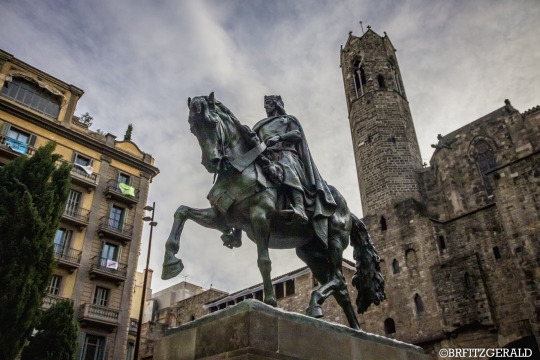
Ramon Berenguer III.
Barcelona
ISO 800 | 18mm | f/3.5 | 1/8000 sec
Photo © 2020 Brian R. Fitzgerald (brfphoto.tumblr.com)
#brfphoto#photography#photographers on tumblr#original photography#lensblr#lux lit#luxlit#biutifulpics#imiging#clubimiging#telescopical#gray-card#galeriedesartsvisuels#originalphotographers#ramon berenguer#statue#barcelona#spain
18 notes
·
View notes
Text
Dulce de Aragão, Queen of Portugal (Wife of King Sancho I of Portugal)

Reign: December 6, 1185 - September 1, 1198
Predecessor: Mafalda of Savoy
Dulce of Aragon (1160 – 1 September 1198) was Queen consort to King Sancho I of Portugal. As the eldest daughter of Ramon Berenguer IV, Count of Barcelona and his wife, Queen Petronila of Aragon, she was the sister of the future King Alfonso II of Aragon.
Her bethrothal to infante Sancho, son of Afonso Henriques, the first king of Portugal, was celebrated when she was eleven years old and the marriage in 1174. Not much is known about her life prior to her arrival in Portugal or of the wedding tokens she received upon her marriage.
"A beautiful and excellent lady, quiet and modest, her personality coinciding with her name," Dulce was used as a commodity to seal an alliance which aimed to "strengthen Portugal and to contain the expansionism of Castile and León" and she played the role that was expected of her as a wife and as the mother of numerous children. At the same time, the marriage compensated for the broken engagement of her husband's sister, Infanta Mafalda with her brother, the future King Alfonso II of Aragon. With the death of King Afonso Henriques in 1185, her husband ascended the throne and she became Queen consort of Portugal. In his first will, executed in 1188, her husband gave her the income from Alenquer, of the lands along the banks of the Vouga River, of Santa Maria da Feira and of Oporto.
Dulce did not live long after the birth of her last two daughters, Branca and Berengaria, probably twins, and died in 1198 probably succumbing to the plague and weakened by the successive childbirths. She was buried in the Monastery of Santa Cruz in Coimbra.
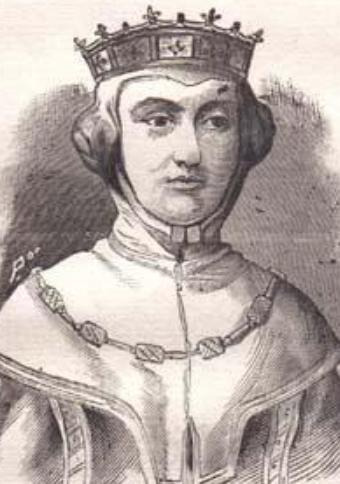
Eleven children were born from her marriage to King Sancho, nine of whom reached adulthood:
Constança (May 1182 – before 1186 or August 1202). According to Rodrigues Oliveira, she must have died before 1186 since her name is not registered in any of the documents of the chancellery of Sancho I which begins in that year";However, the necrology of São Salvador de Moreira records the death "III Nonas Augusti" in 1202 of "Domna Constantia Infantula filia regis domni Sancii et reginæ domnæ Dulciæ".
Afonso (23 April 1186 – 25 March 1223), succeeded his father as the third king of Portugal;
Raimundo (1187/88 – 9 March bef. 1188/89), who died in infancy;
Pedro (23 February 1187 – 2 June 1258), spouse of Aurembiaix, countess of Urgell;
Fernando (24 March 1188 – 27 July 1233), count through his marriage to Joan, Countess of Flanders;
Henrique (aft. March 1189 – 8 Dec aft. 1189), who died during infancy;
Mafalda (1195/1196 – 1 May 1256), the wife of Henry I of Castile, was beatified in 1793;
Branca (1198 – 17 November 1240), probably the twin sister of Berengaria, was raised in the court with her father and his mistress "a Ribeirinha" and, when she was eight or ten years old, was sent to live with her sisters at the Monastery of Lorvão. She was a nun at a convent in Guadalajara and was buried at the same monastery as her mother;
Berengaria (1198 – 27 March 1221), probably the twin sister of Branca, married Valdemar II of Denmark in 1214.
14 notes
·
View notes
Photo
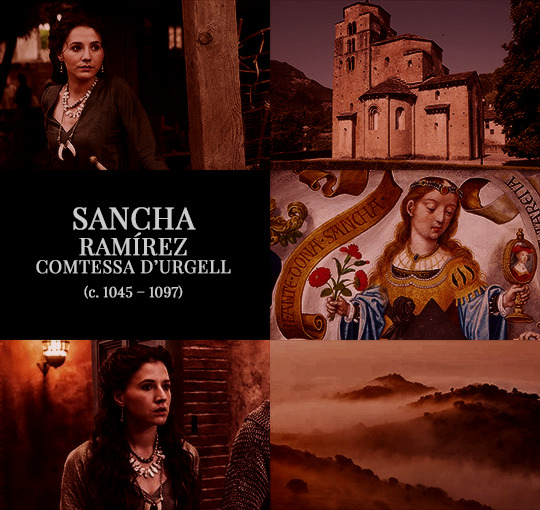

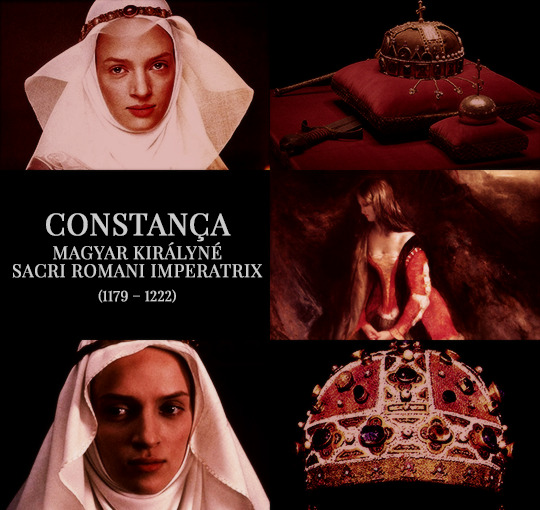






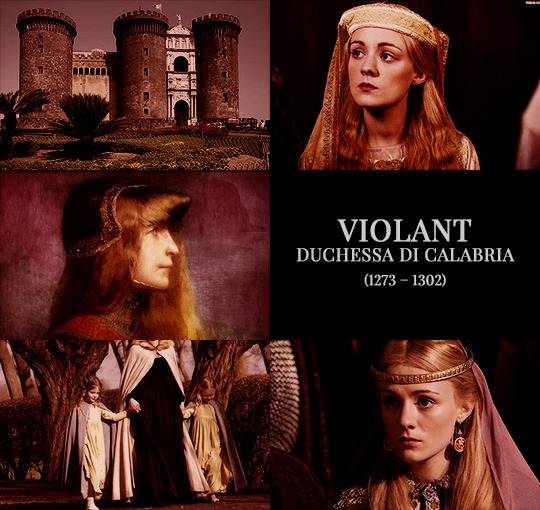
Aragonese infantas aesthetic, part I
Sancha Ramírez, comtessa d’Urgell. Daughter of Remiro I and Ermessenda de Bigorra.
Dolça, rainha de Portugal. Daughter of Peyronela d’Aragón and Ramon Berenguer IV, comte de Barcelona. Mother of Teresa de Portugal, reina de León; Sancha de Portugal, senhora de Alenquer; Mafalda de Portugal, reina de Castilla; Branca de Portugal; and Berengária de Portugal, dronning af Danmark.
Constança, Magyar királyné and Sacri Romani Imperatrix. Daughter of Alfons II and Sancha de Castilla.
Elionor, comtessa de Tolosa. Daughter of Alfons II and Sancha de Castilla.
Sança, comtessa de Tolosa. Daughter of Alfons II and Sancha de Castilla. Mother of Joana, comtessa de Tolosa.
Violant, reina de Castilla. Daughter of Jaume I and Magyarországi Jolán. Mother of Beatriz de Castilla, marchesa del Monferrato.
Constança, señora de Villena. Daughter of Jaume I and Magyarországi Jolán. Mother of Violante Manuel, señora de Elda y Novelda.
Elisabet, reine de France. Daughter of Jaume I and Magyarországi Jolán. Grandmother of Isabelle de France, Queen of England; Jehanne de Valois, comtesse de Hainaut; Marguerite de Valois, comtesse de Blois; Catherine II, Latin Empress of Constantinople; Jehanne de Valois, comtesse de Beaumont-le-Roger; Marie de Valois, duchessa de Calabria; Isabelle de Valois, duchesse de Bourbon; and Blanche de Valois, Sacri Romani Imperatrix.
Elisabet, rainha de Portugal. Daughter of Pere III and Costanza II di Sicilia. Mother of Constança, reina de Castilla. Grandmother of Maria de Portugal, reina de Castilla; Leonor de Portugal, reina de Castilla; and Leonor de Castilla, reina d’Aragó.
Violant, duchessa di Calabria. Daughter of Pere III and Costanza II di Sicilia. Grandmother of Jehanne Ire de Naples and Marie de Calabre.
#house of barcelona#medieval#historyedit#spanish history#european history#women's history#history#nanshe's graphics#royalty aesthetic
131 notes
·
View notes
Photo



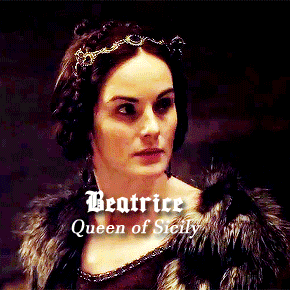
Margaret, Eleanor, Sanchia, and Beatrice were born into the royal family of the minor French county of Provence. But they would rise to be the most powerful women in Europe as the Queens of France, England, Germany, and Sicily, respectively.
Margaret, Queen of France (Spring 1221 - 20 December 1295) was born in Forcalquier, the eldest daughter of Ramon Berenguer IV, Count of Provence and princess Beatrice of Savoy. She was a famous beauty endowed with dark hair and dark eyes and was very close with younger sister Eleanor. In 1234 she married King Louis IX of France. Their eleven children included Queen Isabella of Castile, King Philip III of France, Duchess Margaret of Brabant, and Duchess Agnes of Burgundy. Though Louis loved his wife, he was stuck between his wife and his mother, Queen Blanche who treated Queen Margaret terribly. Margaret, however, was supportive of her husband, going with him on his first crusade. She became the first woman ever to lead a crusade, after her husband was kidnapped by opposition. Her strengthening of France’s relationship with King Henry III of England and Margaret’s sister Queen Eleanor resulted in the Treaty of Paris. King Louis died in his second crusade. Margaret then returned to her Provence where she died.
Eleanor, Queen of England (c. 1223 – 24/25 June 1291) was born in Aixe-en-Provence, second daughter of the Count and Countess of Province. Just like her sisters and mother, the brunette princess was a beauty, who was called by contemporary Piers Langtoft as “the fairest may of life.” In 1236, dressed in a glittering golden gown walking down the halls of Canterbury Cathedral, she married King Henry III of England. Theyir five known children included the famous King Edward I of England, Queen Margaret of Scots, and Duchess Beatrice of Brittany. The young Eleanor never felt at home in the primitive court of England, being so used to the extravagant—though small—court of Provence, and relied heavily on the comfort of her Savoyard relatives. Her association with those Savoy relatives made her unpopular with the people. Her and Henry’s favoritism of the Savoyards over the English nobility caused parliament to call for a new government. Although she tried to raise an army to restore the royal supremacy, it came of nothing. When her husband died, she was isolated in her son’s new England where she died at Amesbury, the convent she had retired to.
Sanchia, Queen of Germany (c. 1228 – 9 November 1261) was considered the most beautiful of the Provencial sisters. Sanchia and Beatrice were annoyed that their queen elder sisters forced them to sit on stools in their presence because of lack of queenship. This would change however, for both of them. In 1242, her sister Queen Eleanor contracted a marriage between Sanchia and Richard, 1st Earl of Cornwall. In 1257, Richard and Sanchia were crowned King & Queen of the Romans. Richard doted on his wife, basking her in extravagance and affection. Sanchia and Richard had only one child, Edmund. Only four years after becoming Queen, Sanchia died at only 33 years.
Beatrice, Queen of Sicily (c. 1231 – 23 September 1267) though she died young like her sister Sanchia, Beatrice by far led the most romantic and exciting life of the sisters. A beautiful princess, Beatrice’s marital prospects were increased when her father made her Countess of Provence in her own right. She had many suitors, including the King of Spain and Charles of Anjou, the latter whom she married. The match was one of affection, if not love, and produced seven children, including Countess Blanche of Flounders, Beatrice the wife of the titular Emperor of Byzantium, King Charles II of Naples, Philippe the titular King of Thessalonica, and Queen Isabella of Hungary. Beatrice & Charles were a team, including pushing Beatrice’s mother out of the control of Provence; setting up a highly efficient and lucrative administration in Provence; and accompanying each other on the Seventh Crusade. As Charles was not yet King, Beatrice was forced to sit at a lower table than her sisters when they all met. In 1266, she and her husband were crown Queen & King of Sicily, finally earning Beatrice a seat at the high table with her queen sisters.
#perioddramaedit#historyedit#royaltyedit#medevial history#margaret of provence#eleanor of provence#sanchia of provence#beatrice of provence#13th century BC#british history#english history#italian history#by olishka#german history#french history#gif#Our edits
257 notes
·
View notes
Text
I think the only case... [of medieval twin inheritance issues] would be when Ramon Berenguer II and Berenguer Ramon II of Barcelona (I know, total lack of originality in naming there) co-ruled the County of Barcelona in the late 1000s. They were supposed to rule jointly and I think on a half-year or yearly basis, but they never quite agreed to how it should have been split, and after 6 years of rule Berenguer Ramon killed Ramon Berenguer (supposedly) while hunting. However a scandal blew up and he had to abdicate in favor of his nephew [Ramon Berenguer III] anyway.
4 notes
·
View notes
Text
0 notes
Text
Events 2.3
1112 – Ramon Berenguer III, Count of Barcelona, and Douce I, Countess of Provence, marry, uniting the fortunes of those two states.
1451 – Sultan Mehmed II inherits the throne of the Ottoman Empire.
1488 – Bartolomeu Dias of Portugal lands in Mossel Bay after rounding the Cape of Good Hope, becoming the first known European to travel so far south.
1509 – The Portuguese navy defeats a joint fleet of the Ottoman Empire, the Republic of Venice, the Sultan of Gujarat, the Mamlûk Burji Sultanate of Egypt, the Zamorin of Calicut, and the Republic of Ragusa at the Battle of Diu in Diu, India.
1583 – Battle of São Vicente takes place off Portuguese Brazil where three English warships led by navigator Edward Fenton fight off three Spanish galleons sinking one in the process.
1661 – Maratha forces under Chattrapati Shivaji Maharaj defeat the Mughals in the Battle of Umberkhind.
1690 – The colony of Massachusetts issues the first paper money in the Americas.
1706 – During the Battle of Fraustadt Swedish forces defeat a superior Saxon-Polish-Russian force by deploying a double envelopment.
1716 – The 1716 Algiers earthquake sequence began with an Mw 7.0 mainshock that caused severe damage and killed 20,000 in Algeria.
1781 – American Revolutionary War: British forces seize the Dutch-owned Caribbean island Sint Eustatius.
1783 – Spain–United States relations are first established.
1787 – Militia led by General Benjamin Lincoln crush the remnants of Shays' Rebellion in Petersham, Massachusetts.
1807 – A British military force, under Brigadier-General Sir Samuel Auchmuty captures the Spanish Empire city of Montevideo, now the capital of Uruguay.
1809 – The Territory of Illinois is created by the 10th United States Congress.
1813 – José de San Martín defeats a Spanish royalist army at the Battle of San Lorenzo, part of the Argentine War of Independence.
1830 – The London Protocol of 1830 establishes the full independence and sovereignty of Greece from the Ottoman Empire as the final result of the Greek War of Independence.
1870 – The Fifteenth Amendment to the United States Constitution is ratified, guaranteeing voting rights to male citizens regardless of race.
1913 – The Sixteenth Amendment to the United States Constitution is ratified, authorizing the Federal government to impose and collect an income tax.
1916 – The Centre Block of the Parliament buildings in Ottawa, Ontario, Canada burns down with the loss of seven lives.
1917 – World War I: The American entry into World War I begins when diplomatic relations with Germany are severed due to its unrestricted submarine warfare.
1918 – The Twin Peaks Tunnel in San Francisco, California begins service as the longest streetcar tunnel in the world at 11,920 feet (3,630 meters) long.
1927 – A revolt against the military dictatorship of Portugal breaks out at Oporto.
1930 – Communist Party of Vietnam is founded at a "Unification Conference" held in Kowloon, British Hong Kong.
1931 – The Hawke's Bay earthquake, New Zealand's worst natural disaster, kills 258.
1933 – Adolf Hitler announces that the expansion of Lebensraum into Eastern Europe, and its ruthless Germanisation, are the ultimate geopolitical objectives of Nazi foreign policy.
1943 – The SS Dorchester is sunk by a German U-boat. Only 230 of 902 men aboard survive.
1944 – World War II: During the Gilbert and Marshall Islands campaign, U.S. Army and Marine forces seize Kwajalein Atoll from the defending Japanese garrison.
1945 – World War II: As part of Operation Thunderclap, 1,000 B-17s of the Eighth Air Force bomb Berlin, a raid which kills between 2,500 and 3,000 and dehouses another 120,000.
1945 – World War II: The United States and the Philippine Commonwealth begin a month-long battle to retake Manila from Japan.
1953 – The Batepá massacre occurred in São Tomé when the colonial administration and Portuguese landowners unleashed a wave of violence against the native creoles known as forros.
1958 – Founding of the Benelux Economic Union, creating a testing ground for a later European Economic Community.
1959 – Rock and roll musicians Buddy Holly, Ritchie Valens, and J. P. "The Big Bopper" Richardson are killed in a plane crash along with the pilot near Clear Lake, Iowa, an event later known as The Day the Music Died.
1959 – 65 people are killed when American Airlines Flight 320 crashes into the East River on approach to LaGuardia Airport in New York City.
1960 – British Prime Minister Harold Macmillan speaks of "a wind of change", signalling that his Government was likely to support decolonisation.
1961 – The United States Air Forces begins Operation Looking Glass, and over the next 30 years, a "Doomsday Plane" is always in the air, with the capability of taking direct control of the United States' bombers and missiles in the event of the destruction of the SAC's command post.
1966 – The Soviet Union's Luna 9 becomes the first spacecraft to make a soft landing on the Moon, and the first spacecraft to take pictures from the surface of the Moon.
1971 – New York Police Officer Frank Serpico is shot during a drug bust in Brooklyn and survives to later testify against police corruption.
1972 – The first day of the seven-day 1972 Iran blizzard, which would kill at least 4,000 people, making it the deadliest snowstorm in history.
1984 – Doctor John Buster and a research team at Harbor-UCLA Medical Center in the United States announce history's first embryo transfer, from one woman to another resulting in a live birth.
1984 – Space Shuttle program: STS-41-B is launched using Space Shuttle Challenger.
1989 – After a stroke two weeks previously, South African President P. W. Botha resigns as leader of the National Party, but stays on as president for six more months.
1989 – A military coup overthrows Alfredo Stroessner, dictator of Paraguay since 1954.
1994 – Space Shuttle program: STS-60 is launched, carrying Sergei Krikalev, the first Russian cosmonaut to fly aboard the Shuttle.
1995 – Astronaut Eileen Collins becomes the first woman to pilot the Space Shuttle as mission STS-63 gets underway from Kennedy Space Center in Florida.
1998 – Cavalese cable car disaster: A United States military pilot causes the death of 20 people when his low-flying plane cuts the cable of a cable-car near Trento, Italy.
2007 – A Baghdad market bombing kills at least 135 people and injures a further 339.
2014 – Two people are shot and killed and 29 students are taken hostage at a high school in Moscow, Russia.
0 notes